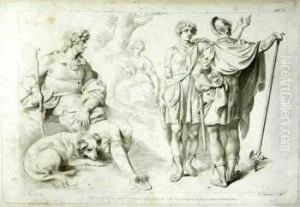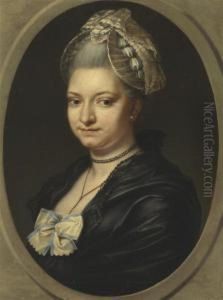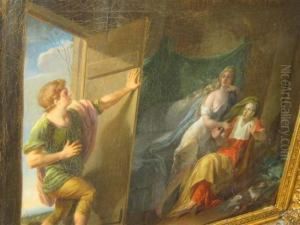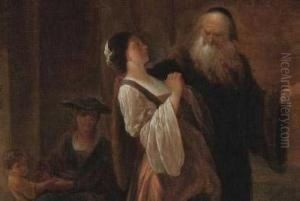Christian Von Mannlich Paintings
Christian von Mannlich was a notable German painter, draftsman, and art director who played a significant role in the cultural scene of his time. Born on June 22, 1741, in Strasbourg, which was then part of France, Mannlich exhibited a talent for the arts from an early age. His initial training was in architecture, but he soon shifted his focus to painting, where his skills quickly developed. Mannlich's style was influenced by the French Rococo movement, and he became known for his portraits and historical scenes.
In 1768, Mannlich moved to Munich, where he became a court painter to the Elector of Bavaria, Maximilian III Joseph. This position allowed him to travel extensively, and he visited Italy to study the works of the Renaissance masters, which greatly influenced his art. Mannlich was not just a painter; he had a keen interest in art administration and was appointed the director of the Mannheim Picture Gallery in 1778. His tenure at the gallery was marked by significant acquisitions and the establishment of a drawing school.
Mannlich's contributions to the arts went beyond painting and administration. He was instrumental in the planning of the Academy of Fine Arts in Munich, which was founded in 1808. His involvement with the academy helped shape the future of art education in Germany. Mannlich was also a prolific writer, authoring a number of autobiographical works and correspondences that provide valuable insights into the art and culture of his time.
Throughout his career, Mannlich was an advocate for the arts and worked tirelessly to promote artistic growth and preservation. His efforts were recognized by his contemporaries, and he was well-respected as both an artist and an administrator. Christian von Mannlich passed away on September 23, 1824, in Munich, leaving behind a legacy of artistic achievement and influence on the German art world.






